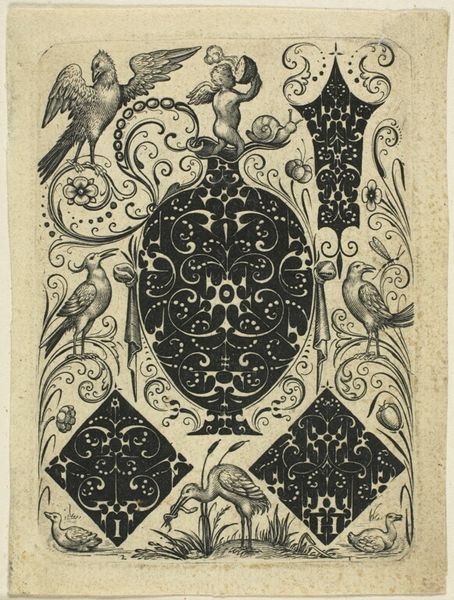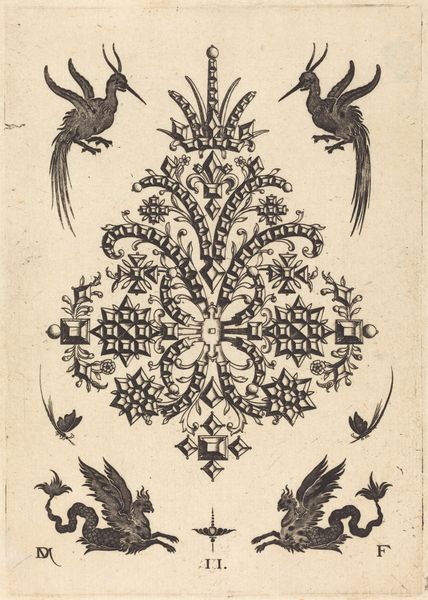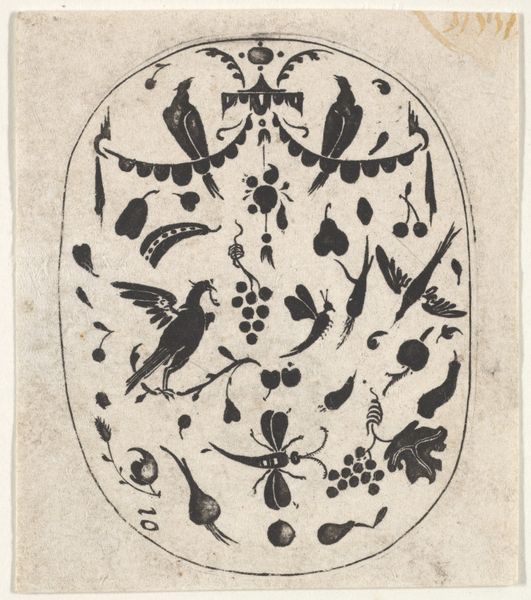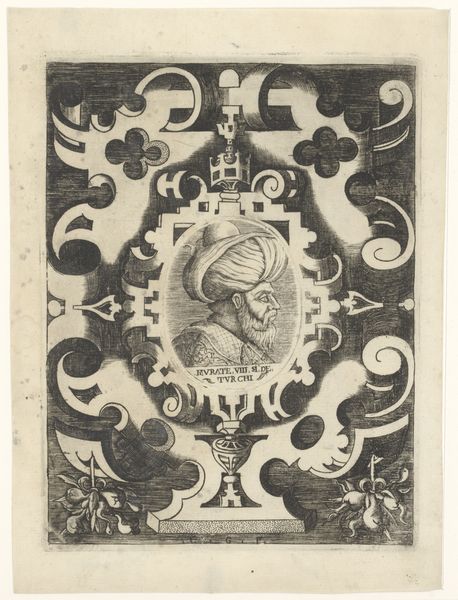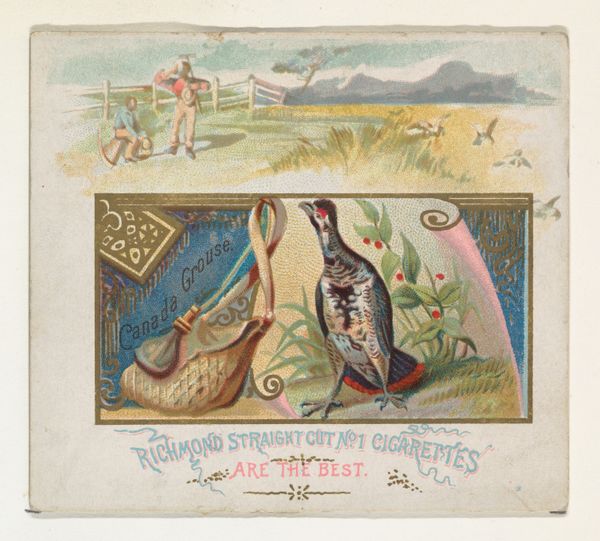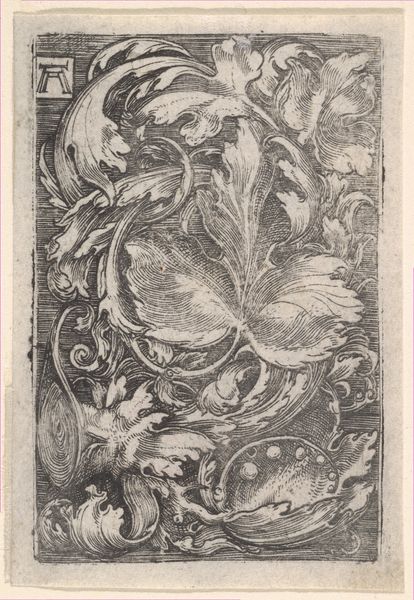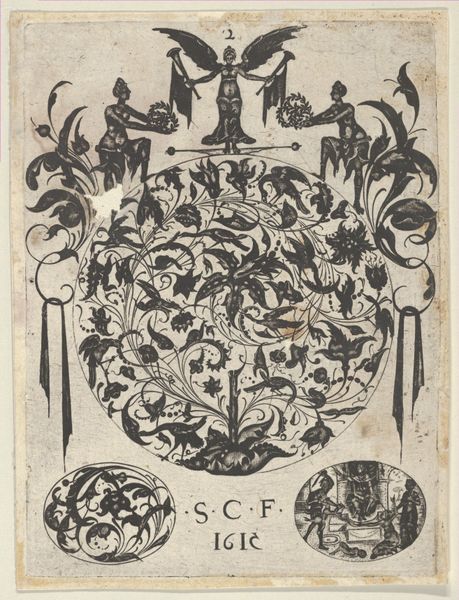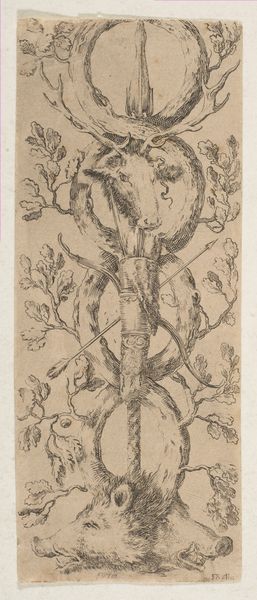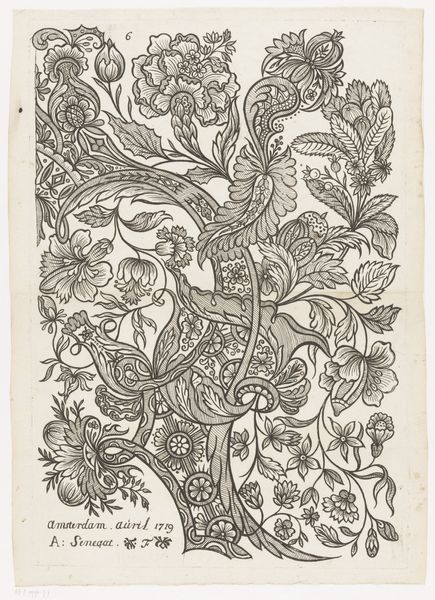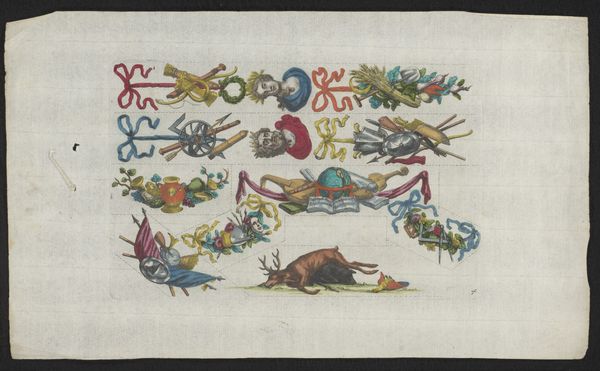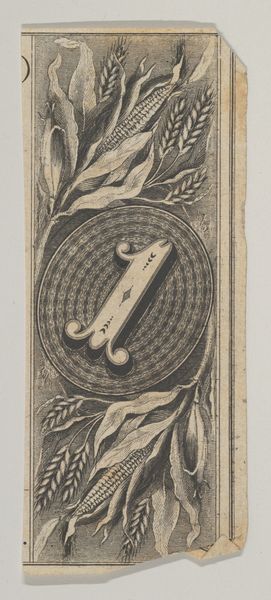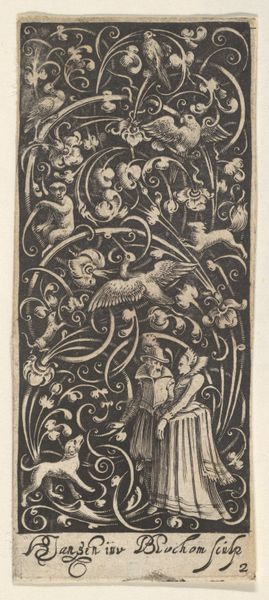
print, linocut
#
organic
#
art-nouveau
# print
#
linocut
#
linocut print
#
organic pattern
#
symbolism
Dimensions: height 439 mm, width 212 mm
Copyright: Rijks Museum: Open Domain
Curator: Hello, and welcome. We are standing before "Kalenderblad voor september 1911 met kevers en een dode mus"—that's "Calendar Page for September 1911 with Beetles and a Dead Sparrow"—a linocut print created around 1910 by Theo van Hoytema. It's held here at the Rijksmuseum. Editor: Gosh, that's...intense for a calendar page. It's strangely beautiful, but there's this immediate melancholy. A tiny little tragedy presented with almost clinical detachment. Curator: Precisely! Van Hoytema, deeply rooted in the Symbolist movement, often used natural imagery to convey powerful emotional states. Death, decay, and transformation were potent symbols. Editor: I get it. The bugs crawling all over this poor, expired sparrow make me think of that line, "For dust thou art, and unto dust shalt thou return." It’s raw and unvarnished, this reminder of mortality ticking away with each passing day on the calendar. But those honeysuckle flowers, in contrast... Curator: Yes, the honeysuckle. A traditional symbol for fleeting happiness and affection, placed deliberately alongside the sparrow and the beetles to create an unsettling juxtaposition. It highlights the temporary nature of beauty and joy. The imagery reflects an ongoing theme of nature's cycle of life, death, and rebirth. Editor: Right. You’ve got the beautiful flower, attracting a bee… then, decay elsewhere. All very much coexisting and part of one another. Makes me wonder if September 1911 was a particularly rough month for him, some specific incident or just a general weariness of existence. Curator: The Art Nouveau styling with organic patterning lends to the reading. The delicate ivy borders almost cage the unsettling central image, adding to the restrained feeling. A way of organizing his perception, or, perhaps, coping with the transience he so strikingly evokes? Editor: Well, this definitely wouldn't be hanging in my kitchen if I needed a cheerful reminder to buy milk, but it definitely strikes a chord and would prompt a bit of soul-searching while I was waiting for my coffee to brew. Curator: Yes, and perhaps, prompt a quiet acknowledgement of beauty in the face of inevitable change. I think that might be van Hoytema's message in a nutshell. Editor: Hmm. Mortality and morning coffee... definitely a Dutch sensibility.
Comments
No comments
Be the first to comment and join the conversation on the ultimate creative platform.

